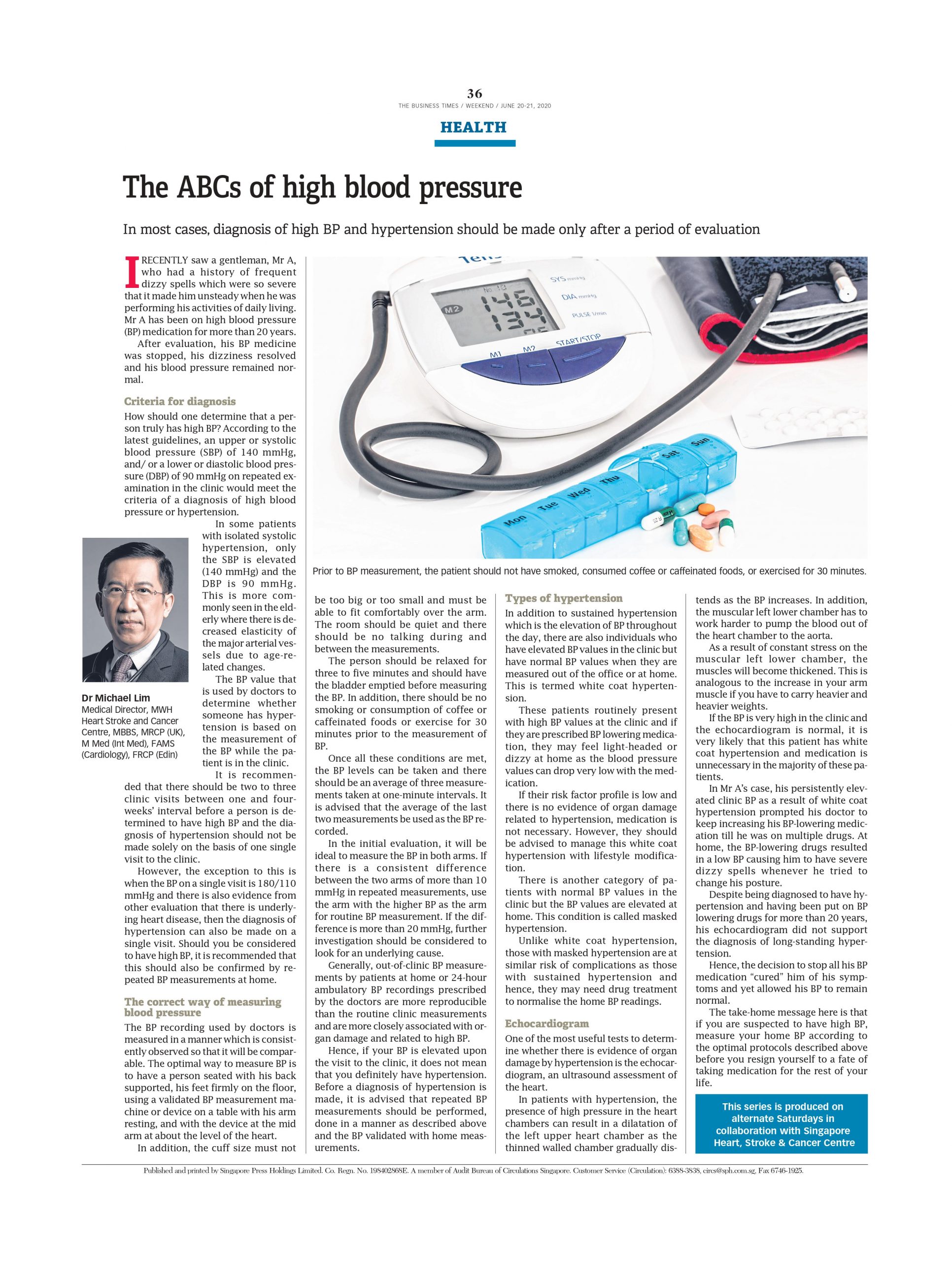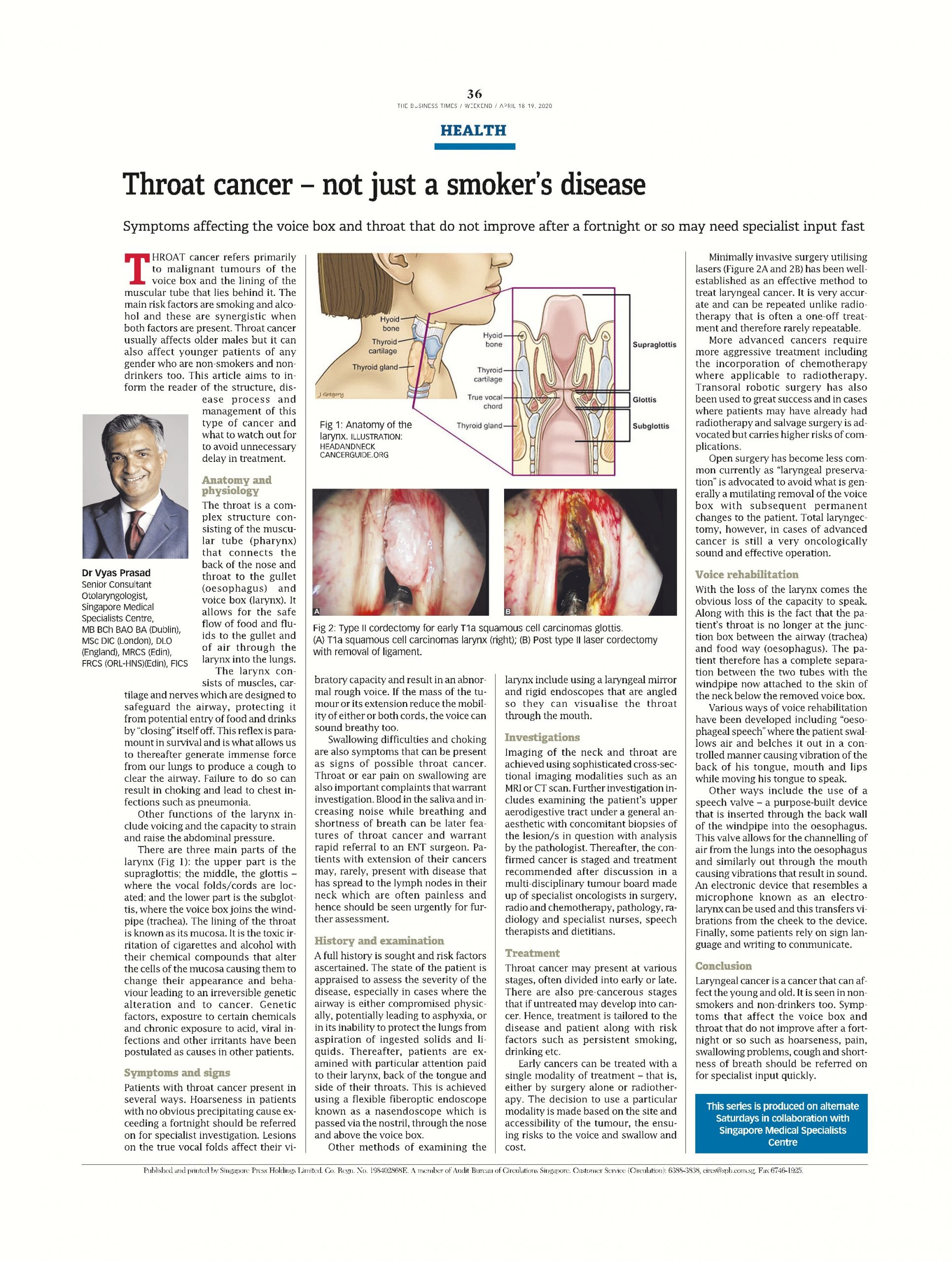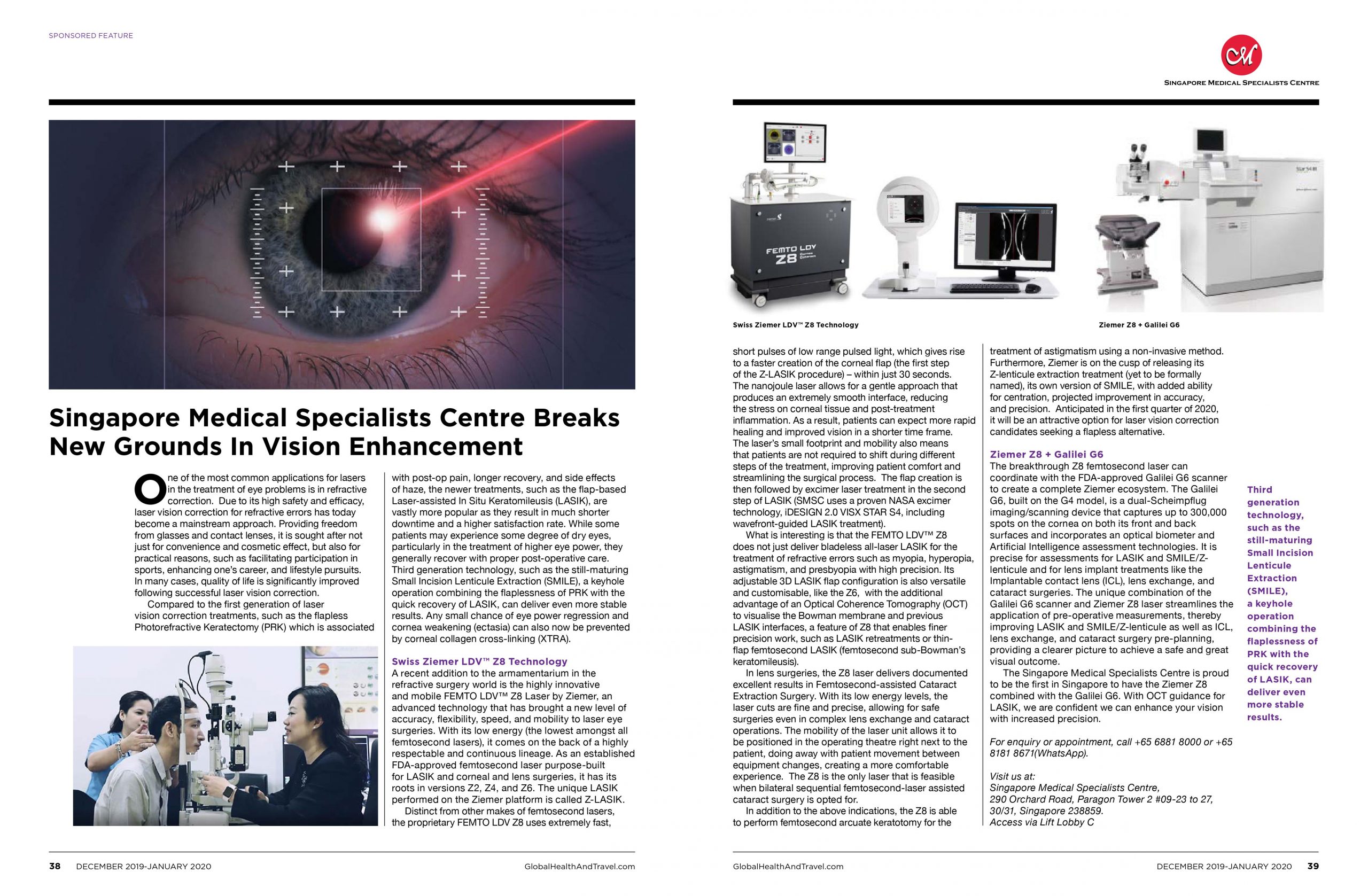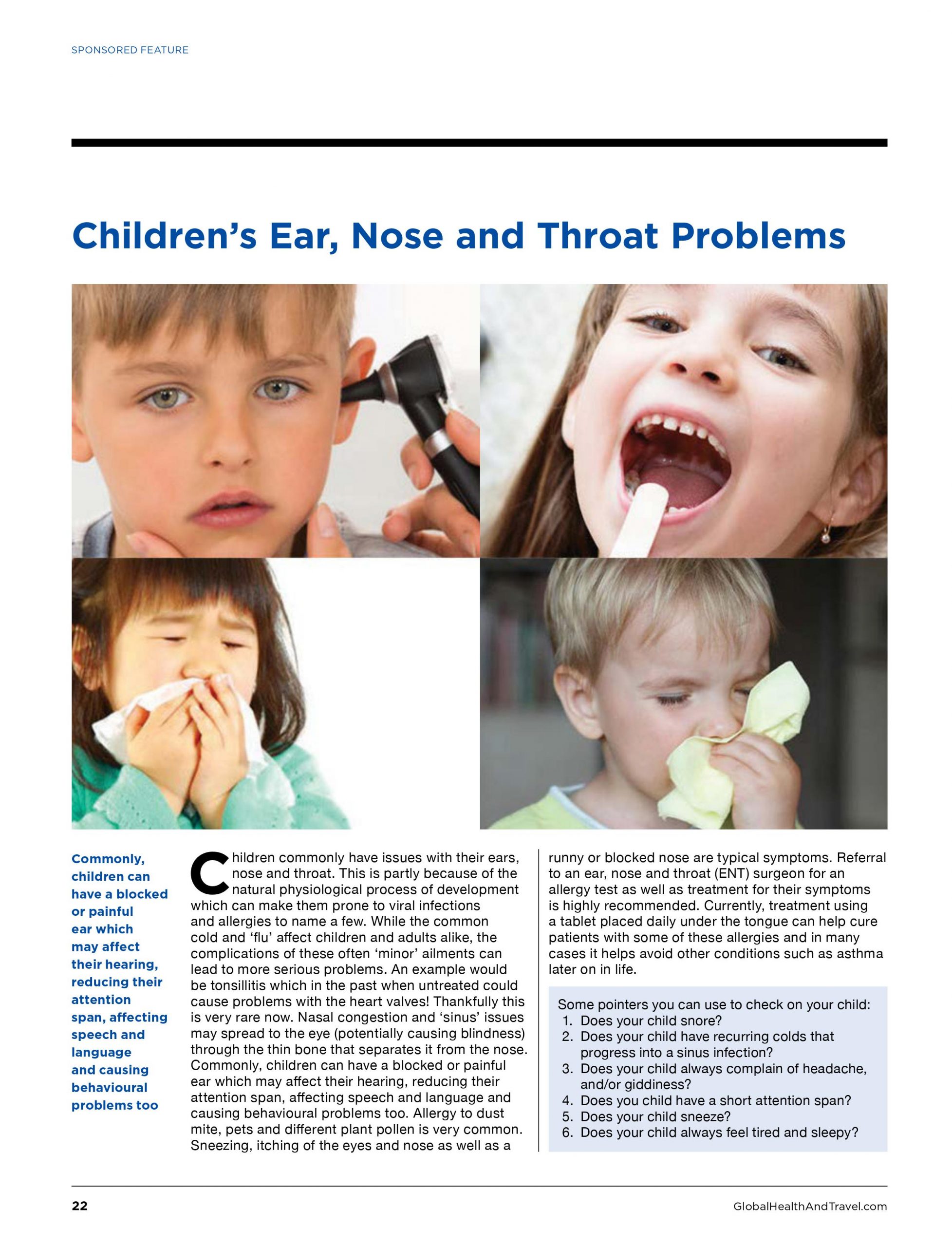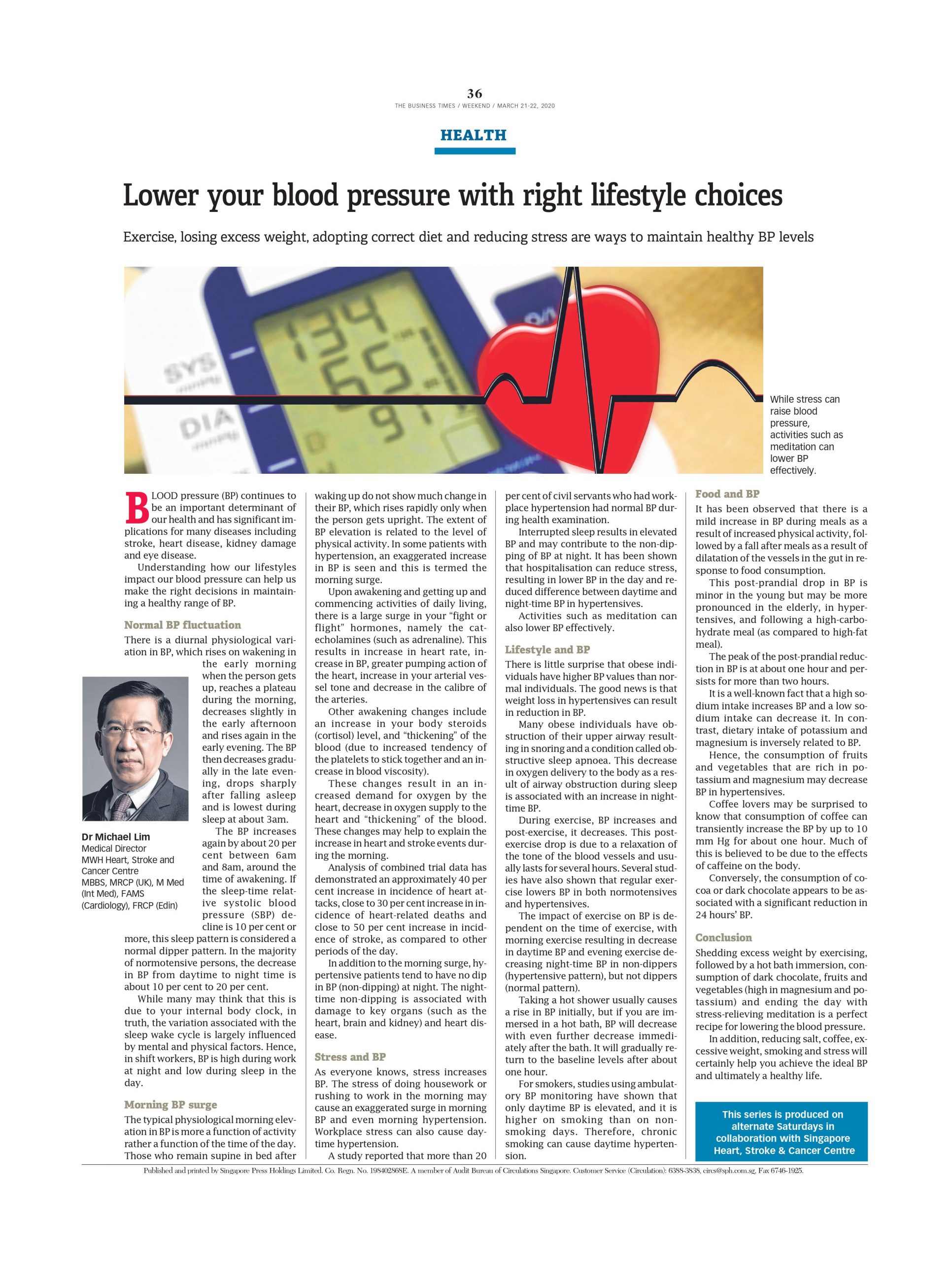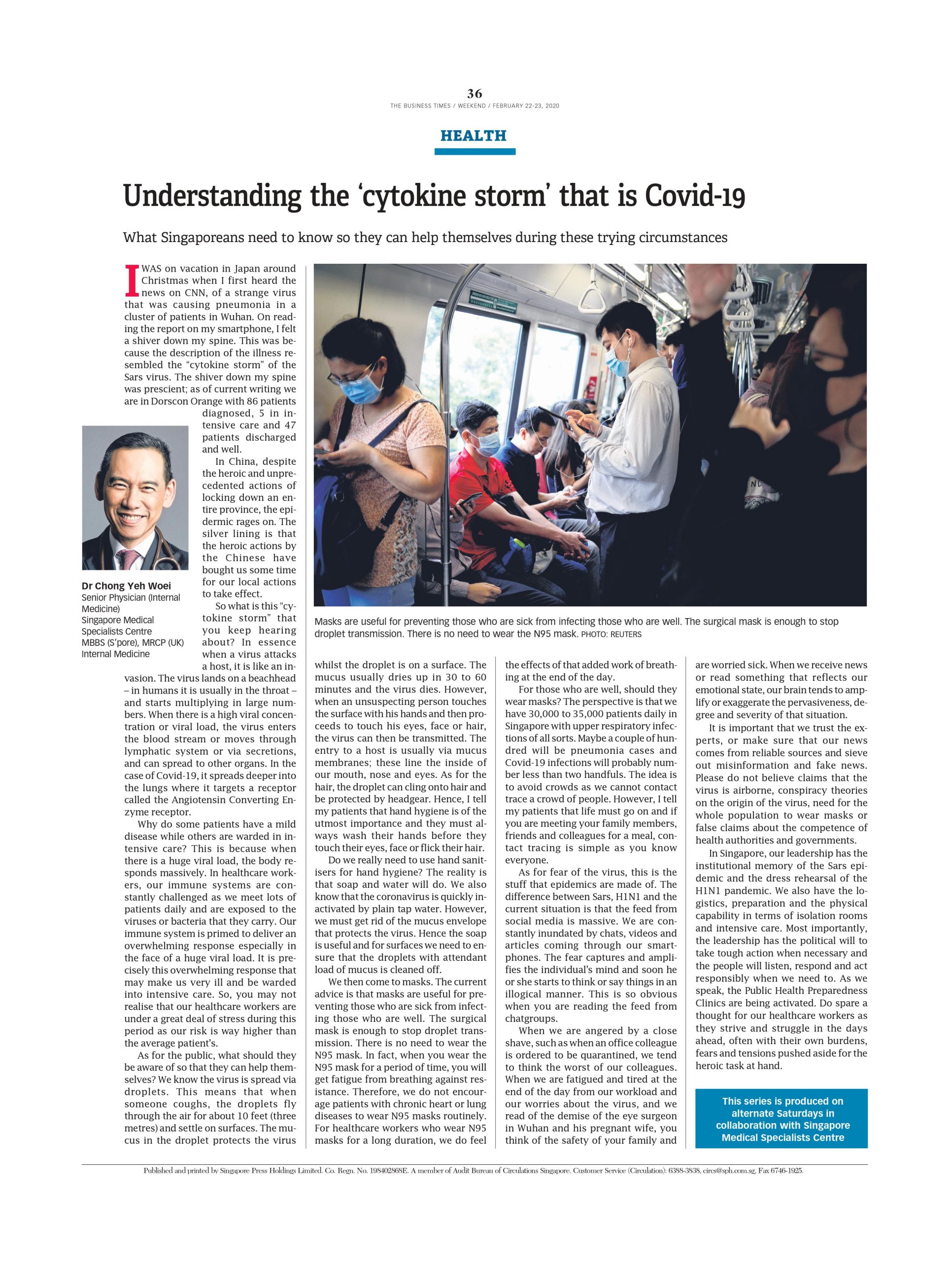In most cases, diagnosis of high BP and hypertension should be made only after a period of evaluation
I recently saw a gentleman, Mr A, who had a history of frequent dizzy spells which were so severe that it made him unsteady when he was performing his activities of daily living. Mr A has been on high blood pressure (BP) medication for more than 20 years. After evaluation, his BP medicine was stopped, his dizziness resolved and his blood pressure remained normal.
Criteria for diagnosis
How should one determine that a person truly has high BP? According to the latest guidelines, an upper or systolic blood pressure (SBP) of 140 mmHg, and/ or a lower or diastolic blood pressure (DBP) of 90 mmHg on repeated examination in the clinic would meet the criteria of a diagnosis of high blood pressure or hypertension. In some patients with isolated systolic hypertension, only the SBP is elevated (140 mmHg) and the DBP is 90 mmHg.
This is more commonly seen in the elderly where there is decreased elasticity of the major arterial vessels due to age-related changes. The BP value that is used by doctors to determine whether someone has hypertension is based on the measurement of the BP while the patient is in the clinic. It is recommended that there should be two to three clinic visits between one and four weeks’ interval before a person is determined to have high BP and the diagnosis of hypertension should not be made solely on the basis of one single visit to the clinic.
However, the exception to this is when the BP on a single visit is 180/110 mmHg and there is also evidence from other evaluation that there is underlying heart disease, then the diagnosis of hypertension can also be made on a single visit. Should you be considered to have high BP, it is recommended that this should also be confirmed by repeated BP measurements at home.
The correct way of measuring blood pressure
The BP recording used by doctors is measured in a manner which is consistently observed so that it will be comparable. The optimal way to measure BP is to have a person seated with his back supported, his feet firmly on the floor, using a validated BP measurement machine or device on a table with his arm resting, and with the device at the mid arm at about the level of the heart. In addition, the cuff size must not be too big or too small and must be able to fit comfortably over the arm.
The room should be quiet and there should be no talking during and between the measurements. The person should be relaxed for three to five minutes and should have the bladder emptied before measuring the BP. In addition, there should be no smoking or consumption of coffee or caffeinated foods or exercise for 30 minutes prior to the measurement of BP. Once all these conditions are met, the BP levels can be taken and there should be an average of three measurements taken at one-minute intervals. It is advised that the average of the last two measurements be used as the BP recorded.
In the initial evaluation, it will be ideal to measure the BP in both arms. If there is a consistent difference between the two arms of more than 10 mmHg in repeated measurements, use the arm with the higher BP as the arm for routine BP measurement. If the difference is more than 20 mmHg, further investigation should be considered to look for an underlying cause. Generally, out-of-clinic BP measurements by patients at home or 24-hour ambulatory BP recordings prescribed by the doctors are more reproducible than the routine clinic measurements and are more closely associated with organ damage and related to high BP.
Hence, if your BP is elevated upon the visit to the clinic, it does not mean that you definitely have hypertension. Before a diagnosis of hypertension is made, it is advised that repeated BP measurements should be performed, done in a manner as described above and the BP validated with home measurements.
Types of hypertension
In addition to sustained hypertension which is the elevation of BP throughout the day, there are also individuals who have elevated BP values in the clinic but have normal BP values when they are measured out of the office or at home. This is termed white coat hypertension. These patients routinely present with high BP values at the clinic and if they are prescribed BP lowering medication, they may feel light-headed or dizzy at home as the blood pressure values can drop very low with the medication.
If their risk factor profile is low and there is no evidence of organ damage related to hypertension, medication is not necessary. However, they should be advised to manage this white coat hypertension with lifestyle modification. There is another category of patients with normal BP values in the clinic but the BP values are elevated at home. This condition is called masked hypertension. Unlike white coat hypertension, those with masked hypertension are at similar risk of complications as those with sustained hypertension and hence, they may need drug treatment to normalise the home BP readings.
Echocardiogram
One of the most useful tests to determine whether there is evidence of organ damage by hypertension is the echocardiogram, an ultrasound assessment of the heart. In patients with hypertension, the presence of high pressure in the heart chambers can result in a dilatation of the left upper heart chamber as the thinned walled chamber gradually distends as the BP increases. In addition, the muscular left lower chamber has to work harder to pump the blood out of the heart chamber to the aorta.
As a result of constant stress on the muscular left lower chamber, the muscles will become thickened. This is analogous to the increase in your arm muscle if you have to carry heavier and heavier weights. If the BP is very high in the clinic and the echocardiogram is normal, it is very likely that this patient has white coat hypertension and medication is unnecessary in the majority of these patients. In Mr A’s case, his persistently elevated clinic BP as a result of white coat hypertension prompted his doctor to keep increasing his BP-lowering medication till he was on multiple drugs. At home, the BP-lowering drugs resulted in a low BP causing him to have severe dizzy spells whenever he tried to change his posture.
Despite being diagnosed to have hypertension and having been put on BP lowering drugs for more than 20 years, his echocardiogram did not support the diagnosis of long-standing hypertension. Hence, the decision to stop all his BP medication “cured” him of his symptoms and yet allowed his BP to remain normal.
The take-home message here is that if you are suspected to have high BP, measure your home BP according to the optimal protocols described above before you resign yourself to a fate of taking medication for the rest of your life.
